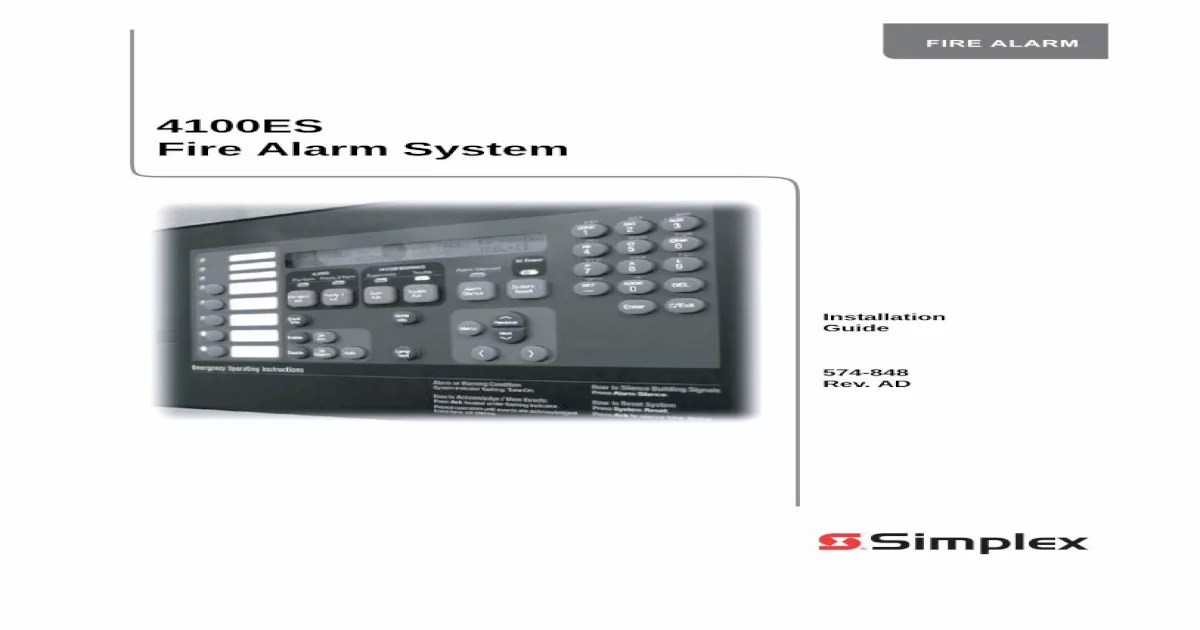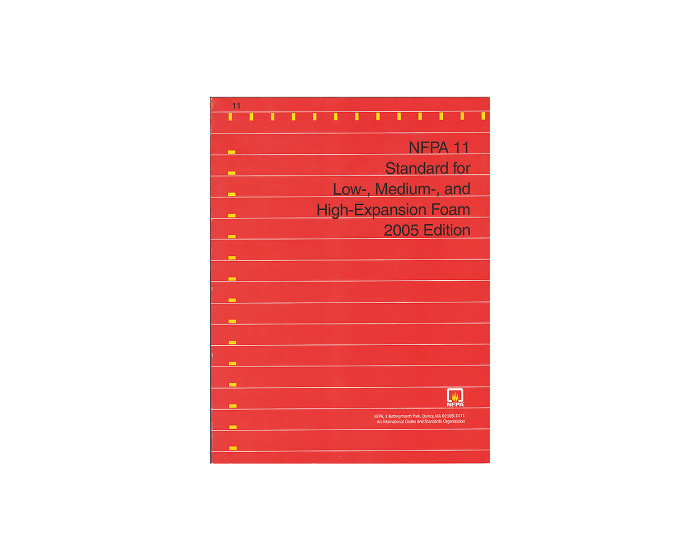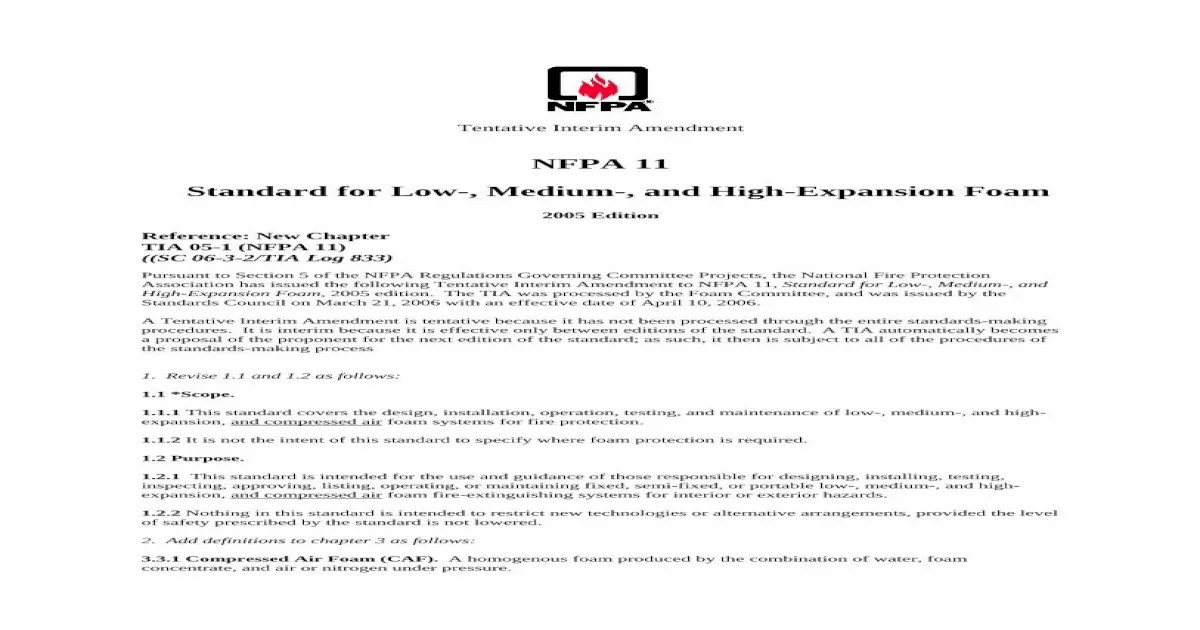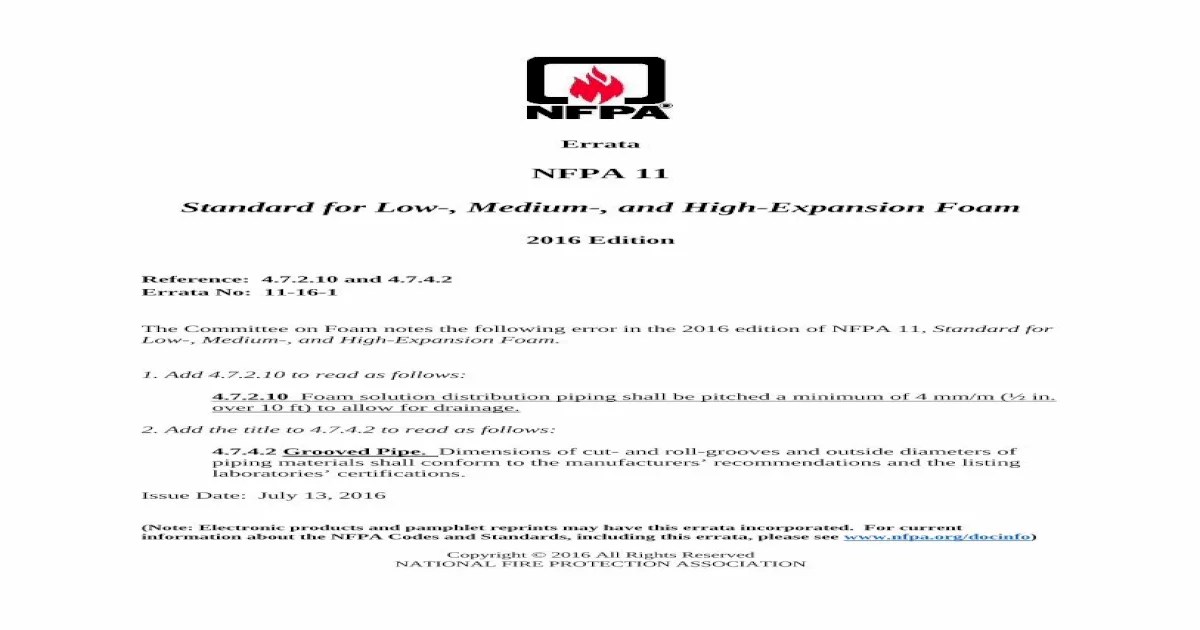Nfpa 11 standard for low- medium- and high-expansion foam – The NFPA 11 standard for low-, medium-, and high-expansion foam provides a comprehensive framework for the design, installation, and maintenance of foam extinguishing systems. This standard is essential for ensuring the safety and effectiveness of foam systems in a wide range of applications, including industrial, commercial, and residential settings.
The NFPA 11 standard has been developed over many years by a committee of experts in the field of fire protection. The standard is based on the latest research and best practices, and it is regularly updated to reflect the latest developments in foam technology.
1. Introduction

NFPA 11, Standard for Low-, Medium-, and High-Expansion Foam, provides comprehensive guidelines for the design, installation, and operation of foam extinguishing systems. It aims to ensure the effective and safe use of foam as an extinguishing agent for various fire hazards.
The standard has undergone continuous development since its initial publication in 1970, incorporating advancements in foam technology and industry best practices.
2. Types of Foam

2.1 Low-Expansion Foam
Low-expansion foam is a highly viscous, stable foam with an expansion ratio of approximately 10:1. It is characterized by its ability to form a thick, tenacious layer over the surface of flammable liquids, smothering the fire and preventing reignition.
2.2 Medium-Expansion Foam
Medium-expansion foam has an expansion ratio of 20:1 to 100:1. It is less viscous than low-expansion foam and flows more easily, making it suitable for extinguishing fires in enclosed or obstructed areas.
2.3 High-Expansion Foam
High-expansion foam has an expansion ratio of over 100:1. It is a lightweight, dry foam that can fill large volumes of space, providing cooling and suppression effects. High-expansion foam is particularly effective in extinguishing deep-seated fires or protecting against smoke and heat damage.
3. Foam System Design

3.1 Low-Expansion Foam Systems
The design of low-expansion foam systems involves determining the appropriate foam type, nozzle selection, piping layout, and storage capacity. Considerations include the hazard type, area to be protected, and discharge time requirements.
3.2 Medium-Expansion Foam Systems
Medium-expansion foam systems require careful consideration of the expansion ratio, flow rate, and coverage area. The design process includes selecting nozzles, pumps, and foam concentrate storage.
3.3 High-Expansion Foam Systems
High-expansion foam system design focuses on achieving uniform distribution of foam throughout the protected space. Factors such as the foam expansion ratio, ventilation conditions, and ceiling height influence the system design.
4. Foam System Components: Nfpa 11 Standard For Low- Medium- And High-expansion Foam

4.1 Low-Expansion Foam Systems
- Foam concentrate storage tank
- Proportioning equipment
- Nozzles
- Piping and valves
- Fire pumps
4.2 Medium-Expansion Foam Systems, Nfpa 11 standard for low- medium- and high-expansion foam
- Foam concentrate storage tank
- Proportioning equipment
- Foam generators
- Air supply system
- Piping and valves
4.3 High-Expansion Foam Systems
- Foam concentrate storage tank
- Proportioning equipment
- Foam generators
- Air supply system
- Distribution devices
Essential Questionnaire
What is the purpose of the NFPA 11 standard?
The NFPA 11 standard provides a comprehensive framework for the design, installation, and maintenance of foam extinguishing systems.
Who should use the NFPA 11 standard?
The NFPA 11 standard is essential for anyone involved in the design, installation, or maintenance of foam extinguishing systems.
How often is the NFPA 11 standard updated?
The NFPA 11 standard is regularly updated to reflect the latest developments in foam technology.